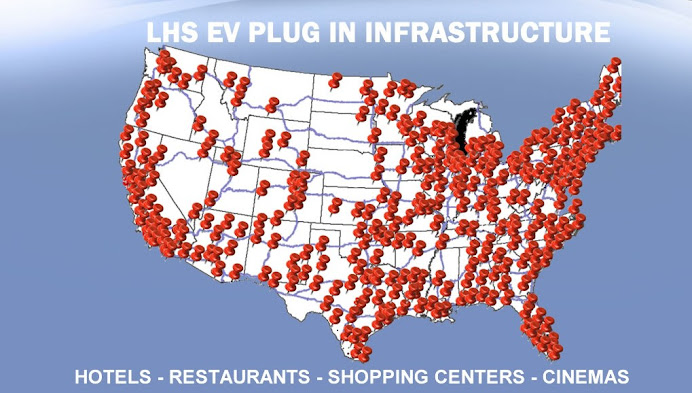 Ford has been working to restructure itself as a provider of hybrid and electric vehicles. The transition to electric vehicles will require a host of technology providers working together to ensure success. Mike Tinskey, manager of Ford’s sustainability activities, outlined what Ford sees as essential for electric vehicles and supporting infrastructure, during a presentation at the Plug-in 2009 conference in Long Beach this past week.
Ford has been working to restructure itself as a provider of hybrid and electric vehicles. The transition to electric vehicles will require a host of technology providers working together to ensure success. Mike Tinskey, manager of Ford’s sustainability activities, outlined what Ford sees as essential for electric vehicles and supporting infrastructure, during a presentation at the Plug-in 2009 conference in Long Beach this past week.During his talk, he suggested that migrating to battery commonality would be a huge win for the industry simply because it would support a more rapid achievement of the higher production volumes required to bring prices down.
According to Tinskey, 'The biggest issue with batteries now is not necessarily the technology, it’s the volume. If the battery manufacturers could get north of 100,000 packs, annually prices come down drastically.'
A new battery standard would also be helpful, Tinskey added, 'But if we could get movement to migrating to some commonality, overall that would be a huge win for the industry.'
Currently, Ford has four full hybrids on the market. For the mid-term (2011-2020), Ford will increase its use of hybrid technology, and introduce plug-in hybrid electric (PHEV) and battery electric vehicles (BEV) on the market.
For the long-term (2020-2030), Tinskey said, Ford will focus on volume expansion of hybrid technologies, continue to leverage PHEVs and BEVs, and introduced fuel cell vehicles. There is also an accompanying long-term focus on clean electricity and hydrogen for fueling.
Ford chose to develop many of its electrified products on its global C platform - a high-volume platform that sells millions every year. Specifically on the BEV side, Ford has announced two vehicles: the electric Transit Connect light commercial van in 2010, and the battery electric Focus in 2011 (using new styling and with a new model).
Both of these are C-platform applications. Ford will introduce a plug-in hybrid version with its next generation hybrid vehicles in 2012.
Citing the wide variance in industry projections - ranging from the extremely conservative to the wildly optimistic - Tinskey noted that the large degree of uncertainty contributed to Ford’s adoption of its current electrification strategy which is designed to optimize flexibility and response time.
Market enablers for electrification
In addition to battery commonality, Ford sees other success factors contributing to successful electrification as:
1- The charging infrastructure. Ford sees home charging as the segment where the most frequent charging will occur, followed by fleet depot charging, charge at work, and then public charging, in that order. For the next four years or so, he sees no major charging infrastructure. Standards are critical for success here. Tinskey also noted that fast charging present challenges on vehicles, due to the sizing of onboard electronics.
2- Supporting policies.
3- Utilities, vehicle-to-home (V2H), and vehicle-to-grid (V2G). Ford is a little bearish on the concept of V2G at this point, he said. 'Let’s figure out V2H-then we can figure everything else out.' Key for success here is working with utilities and emerging standards for messaging and communications between the vehicle and the grid and utility.
4- Utility partnership and renewable power generation.
5- Alternative business models and alliances.
6- Government incentives and grants.
7- Secondary uses for the battery pack (this is linked to the commonality issue, as repackaging common formats would reduce cost and make sales less convoluted.
8- Demonstrations and early fleet sales.
Source : Environmental Expert, August 19th, 2009
 By 2020 one million electric vehicles are to be on German roads pledged the German Cabinet last week when they unvelied a National Development Plan on Electric-Drive Vehicles covering the next ten years. The development plan aims to foster research and development into battery-operated electric-drive vehicles in Germany, as well as preparing the market and launching the vehicles on the market.
By 2020 one million electric vehicles are to be on German roads pledged the German Cabinet last week when they unvelied a National Development Plan on Electric-Drive Vehicles covering the next ten years. The development plan aims to foster research and development into battery-operated electric-drive vehicles in Germany, as well as preparing the market and launching the vehicles on the market.









.jpg)








